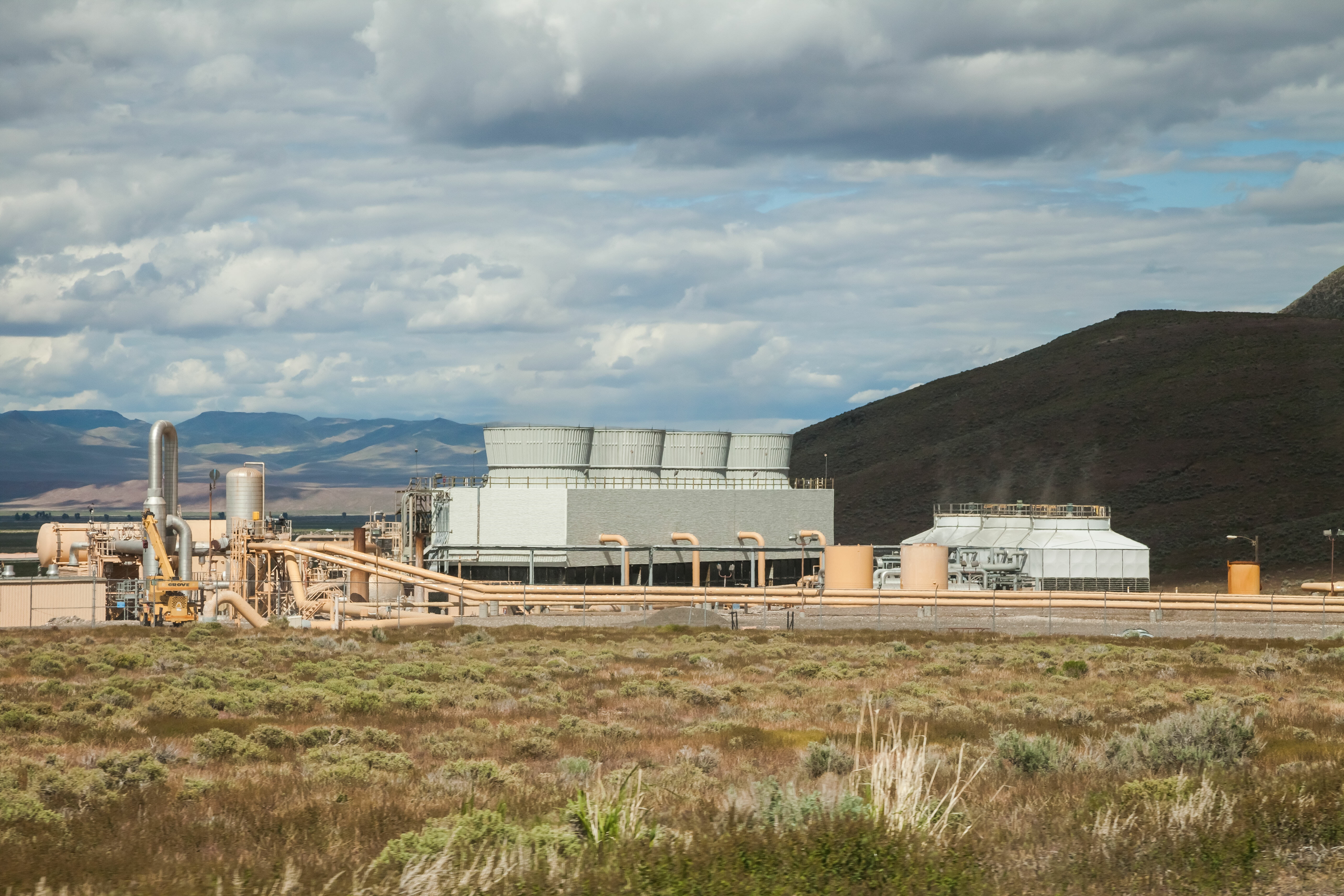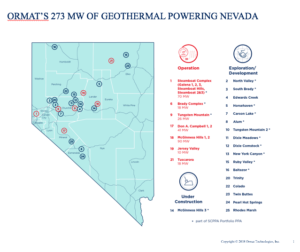Energy Department eliminates Nevada as test site for advanced geothermal research but project leaders say work will continue

On a drive from Reno into Churchill County along the I-80, steam billows off the Earth next to a nearby geothermal plant.
The natural vents, known as fumaroles, are clustered near the power plant and allow underground heat to escape the surface. They’re a good indicator of a potential energy source for Nevada renewable developers, who instead of looking up to the sun for solar, look below ground for geothermal.
The fumaroles are a footprint of geothermal resources underneath, but they are rare and many of these sites — where the resource is visible from the surface — have been developed. As a result, geothermal companies have increasingly turned their attention to areas where the resource is invisible at the surface and where there is more complex geology for producing power in geothermal plants from heat locked under the Earth. The problem is that exploration for those more advanced geothermal resources is risky and costly.
For years, a team of researchers based in Fallon had been putting together a plan to tackle that issue in a bid to unlock up to $140 million in grant dollars from the Department of Energy. That effort ended abruptly in late June when the department informed the Fallon researchers that it had passed over the proposal and had decided to instead award the grant to researchers in Utah.
The federal dollars would have gone to a field laboratory for enhanced geothermal drilling, a method to create better geologic conditions for geothermal power production. The drilling allows developers to fracture rock and create more pathways for heat by injecting water. It is similar to hydraulic fracturing but does not use the same sand formula or added chemicals.
Nevada had strongly pushed for the grant as an effort to further position the state as a leader in geothermal energy, so much so that Gov. Brian Sandoval’s Office of Energy pledged $1 million last year to help the research team.
“Disappointment would be the word for [the decision],” said Nathan Strong, who helps lead economic development efforts for Churchill County. “I feel like I’m still licking my wounds.”
James Faulds, the state geologist and director of the Nevada Bureau of Mines and Geology, said that he thought the Fallon team, which he was involved with, put forward a strong proposal. He said the Fallon site would have explored three rock types whereas the Utah site would only target one rock type.
“We really thought we had the best project and best team,” he said.
For everyone involved, the question has turned to what happens to years of research, development and initial exploration at the proposed lab site in Fallon.
Researchers began working on the Fallon project in November 2014 after submitting a proposal to create an advanced geothermal field laboratory through the Department of Energy. In 2016, the federal agency selected the Fallon site and the Utah site as the two finalists for the field lab, known as the Frontier Observatory for Research in Geothermal Engineering, or FORGE. After that, the team, which was led by Sandia National Laboratories, invested in drilling test holes, conducting environmental reviews and getting permits.
“The dust is still settling a bit from the decision,” Faulds said. “There is interest out there to do work on that site independent of the official FORGE [project].”
He said that it’s possible a private company could develop a geothermal power plant on the site. He added that there has already been some industry interest in using the team's research to turn the site into a commercial project.
“We know that the site is very suitable for [an enhanced geothermal project],” he said.
In 2016, geothermal power accounted for a sliver of all electricity produced by U.S. power plants, less than 1 percent. But researchers believe that geothermal power could account for more energy if new technology brings down exploration costs and makes it easier to pinpoint subsurface geothermal resources.
An often-cited U.S. Geological Survey report from 2008 suggested that Nevada alone, by the most conservative estimate, had nearly 996 megawatts of undiscovered geothermal resources, or roughly enough to cover the electricity demands of 747,000 homes. Enhanced drilling, according to the USGS, could unlock an additional 71,800 megawatts in Nevada. Applied across the United States, the Fallon FORGE team had said the drilling method could tap into 100 gigawatts of geothermal, or enough for 100 million homes.
Ormat, a Reno-based company and one of the largest geothermal developers, has pushed for more research in this area as a partner on the team that put together the Fallon proposal. Paul Thomsen, the company’s executive director of government and regulatory affairs, said there is a need for more research into subsurface drilling, the type of work that the field lab in Utah will do.
“Geothermal developers don’t have the big research and development budget like the oil and gas industry so progress is slow,” he said.
Geothermal power has become more attractive to utilities and power purchasers, especially in the West. It serves as a renewable source of energy that, unlike solar or wind, runs all day and night. As a result, the industry has argued, it can more easily replace coal and natural gas plants coming offline.
Most of the country’s geothermal power — about 94 percent — is produced in California and Nevada, a fact that has helped policymakers to position the state as an industry leader. But if the state is a leader in building geothermal plants, Churchill County, where the Fallon site is located, is an epicenter.

Strong, who directs the Churchill Economic Development Authority, said geothermal is the county’s third biggest economic output after the Fallon Naval Air Station and agriculture. Ormat has two power plants there and more than a half-dozen exploration sites in the county. Other big renewable power developers, including Enel Green Power, have sited plants there.
Strong said that in addition to developing the Fallon site for a commercial project, there is still talk of conducting research there. Western Nevada College, he said, is interested in continuing work on the project.
"There's the potential to acquire money out there and kind of do our own thing,” Strong said.
The Energy Department’s decision to pass over the Fallon site is still a raw topic for Strong, who had hoped that designating a national field laboratory in the county would have solidified its geothermal industry. In the past few weeks, he’s thought often of a quote from Tommy Lasorda, a legendary manager for the Los Angeles Dodgers. Lasorda once quipped that “the best possible thing in baseball is winning the World Series. The second best thing is losing the World Series.” Strong said that quote now means more to him than it ever has before.
“We lost the World Series,” he says. “But there are 48 other teams that didn’t even make it.”
